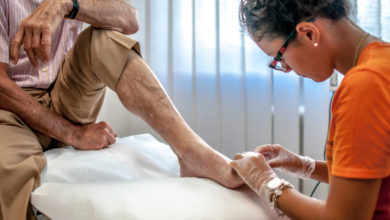Be well prepared. This was the best piece of advice I was given prior to applying for admission to medical school. But what did it mean to be prepared? Having satisfied all pre-medical coursework, an above average grade point average, research experience, and a good MCAT score should have been sufficient enough to get into medical school. However, when learning that the acceptance rate of admission to medical school was only 4%, I felt that I needed to do more.
From pooling advice from prior successful applicants to reading online forums on the infamous Student Doctor Network, the consensus was clear: submit your application as soon as humanly possible. AMCAS applications usually open during the first week of May with submissions beginning at the end of the month. Anticipating these dates caused an undeniable sense of anxiety. But to help ease this, I began preparing my application materials well in advance. Researching the details of the AMCAS application, I learned that the bulk of the application was similar to a CV with the largest variable component being the personal statement. So it was pretty clear that I needed to start with my personal statement. I began the first draft of my personal statement at the end of January, and then editing and revisions in February. Shortly thereafter sent copies to different friends, family members, and mentors for critiquing. My personal statement was completed by end of April. Done, and what a relief!
When the AMCAS application opened, I utilized the three weeks between the application opening to the date of submission to fill out the technical portion of the application. The most time consuming thing was inputting grades and providing descriptions for extracurricular activities. By the third week of May, my application was ready to be submitted! Although I felt sense of accomplishment, I quickly began to think of how I could stay ahead of the application process. And with secondary applications around the corner, I thought I should start preparing essays for each of the schools that I applied to. But how to mange this? Well simple, find the essay prompts from previous year applications and hope the essays would be the same during the current cycle.
Before I began to tackle the secondaries, I made a list of certain qualities and experiences, which were not found elsewhere in my application that I wanted to highlight. I used these ideas and created small compositions. Although each secondary application had its own essay prompts, many had similar themes. So I made minor tweaks to the compositions I had prepared and was able to satisfy the prompts. My secondary applications were essentially complete, even before I had received them. Yes, I know what you maybe thinking. What if you were not offered a secondary to a particular school…well I took the risk and potentially did extra work to be as prepared as I could be. So once I did receive the secondary, it was a matter of minutes until I actually submitted it. My turn over time was no longer than a day. And because applications are reviewed and interviews are granted on a rolling basis, timely submissions are key. But I was sure to not compromise on the quality of the work I submitted even if that meant I would send it in slightly later than planned.
After this came the next phase of the process… the waiting. And as agonizing as the waiting process was, I again used the time to optimize my chances of moving forward in the process. Either writing letters of intent or letters of updates; I used any opportunity to keep my application active during the process. Then when granted interviews to schools, the next phase of the process began. And again, this meant more preparing … and this I save for next time.



